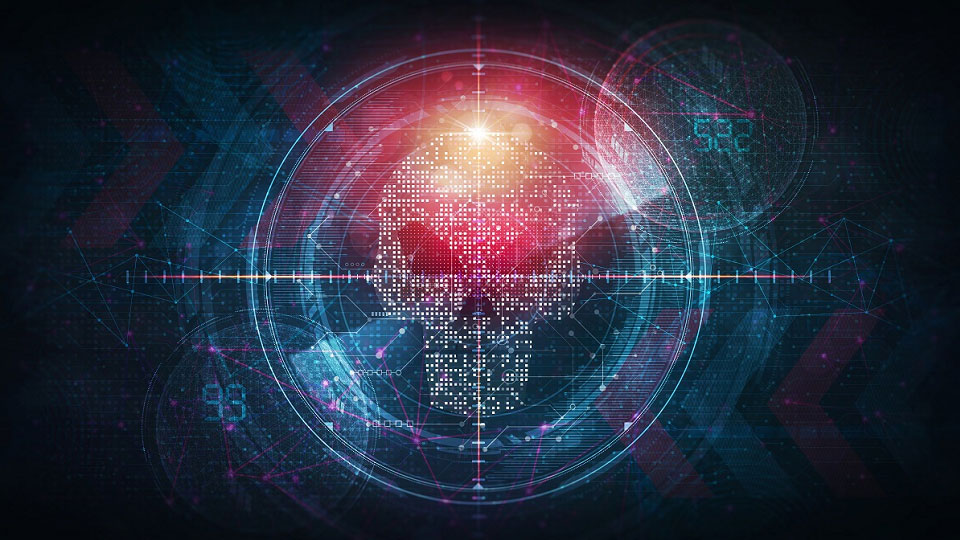Learn how to identify, mitigate, and protect your AI/LLM from jailbreak attacks. This guide helps secure your AI applications from vulnerabilities and reputational damage.
Fergal Glynn

Cyberattacks are on the rise, and many hackers are targeting AI systems specifically. Unfortunately, traditional cybersecurity approaches, such as firewalls, can’t catch these AI threats in time. Security teams must adopt a new approach to safeguarding high-value models.
Automated AI threat hunting is an agile and proactive approach that detects and stops threats in their tracks. By combining the speed of automation with the intelligence of machine learning, these systems can detect emerging threats in real time, analyze data instantly, and even trigger rapid incident response.
Learn how automated detection systems work and why they’re so beneficial for AI threat hunting.

Automated detection systems use AI to spot threats. They analyze massive volumes of data at lightning speed, learning what “normal” activity looks like. This baseline enables the system to detect subtle anomalies that may signal a breach or an attempted attack.
Every automated detection system is different, but many include features for:
As attackers change their methods, detection systems automatically stay up to date by learning from these new threats. They also automate security tasks, such as real-time alerts and incident response workflows, which help teams respond in minutes instead of hours.
Cutting-edge tools, such as Mindgard’s Offensive Security solution, take this a step further by simulating attacks against AI systems to uncover weaknesses.
Automated AI threat hunting makes cybersecurity smarter. While there’s still a place for human analysis, there are many benefits to adding an automated detection system to your tech stack.
Automated AI threat hunting platforms pull data from internal logs, endpoints, the cloud, and external threat intelligence feeds. The platforms are always learning, which helps them identify new attack patterns before they ever hit your infrastructure.

AI-powered systems analyze network behavior, user activity, and logs in real time. It would take a human analyst hours or even days to find deviations, but the AI can spot them in seconds.
Automated detection systems don’t just alert your team when a problem arises; they automatically activate a mitigation playbook when an issue is detected. They can handle everything from isolating infected endpoints to blocking malicious IP addresses.
Threat actors often strike during off-hours or holidays when your defenses are at their weakest. Automated AI threat hunting systems don’t take breaks. They continuously scan network traffic, user behavior, and system logs around the clock to detect suspicious patterns even when no one’s watching.
Constant monitoring is the key to containing AI threats in just minutes, which drastically minimizes the damage. Solutions like Mindgard also provide continuous AI stress-testing to catch vulnerabilities long before attackers can exploit them.
Traditional security tools flood analysts with daily alerts, many of which are false positives. Automated AI systems utilize behavioral baselines, contextual analysis, and machine learning models to filter out noise, escalating alerts only when they show clear signs of malicious activity.
This approach significantly reduces alert fatigue, enabling teams to respond more quickly to genuine threats. According to MixMode, 56% of organizations reported improved prioritization, and 43% saw faster threat analysis when using AI tools.
While automated AI threat hunting can offer speed and scale that surpass traditional teams, there are limitations that security leaders should be aware of before adopting this approach. Understanding these can help prevent blind spots and missteps.
Machine learning models are powerful, but they’re not infallible. As attackers continue to develop new techniques and methods, a detection system trained on historical data may not detect novel exploits. Relying too heavily on automation without human verification can lead to a false sense of security.
Pair automated detection with adversarial simulations and red teaming exercises. Running controlled attacks against models helps reveal coverage gaps and identify areas for improvement, ensuring systems continuously evolve with attacker techniques.
Developing and maintaining an automated detection system requires significant investment in infrastructure, data pipelines, and ongoing model training and tuning. Smaller organizations may face resource or cost constraints that make it difficult to build and maintain these systems.
Start with a targeted deployment. Focus initial efforts on the highest-risk areas of the attack surface to deliver early wins.
Platforms like Mindgard streamline automation implementation, allowing teams to leverage focus on key areas such as model drift, access anomalies, and attack surface mapping, without the need to build everything from scratch.
Automated systems still require human oversight for validating findings, investigating anomalies, and ensuring that responses are aligned with business and compliance requirements. Without proper governance, automated decisions can introduce operational risks that are as damaging as the threats they’re designed to mitigate.
Establish human-in-the-loop processes and clear escalation paths for validation and analysis. Integrating automated tools into SOC workflows ensures analysts maintain control while still benefiting from the speed and scale automation provides.

Automated threat hunting isn’t a standalone defense. It’s a force multiplier that works best inside a layered security strategy, complementing security teams, red teaming exercises, and compliance obligations.
Automation handles the round-the-clock scanning of logs, telemetry, and behavioral data. With systems like Mindgard’s Artifact Scanning solution, detection of model drift or access anomalies happens continuously, allowing analysts to focus on deeper investigations and incident response instead of routine monitoring.
Red teams uncover vulnerabilities through simulated adversarial campaigns. Mindgard’s Offensive Security platform extends that capability by running controlled attacks against AI models in production, mapping the threat surface, and identifying weak points before they can be exploited. Together, human teams and automated systems create a feedback loop that strengthens defenses over time.
Most regulatory frameworks now require proof of continuous monitoring and proactive defense measures. Automated detection through Mindgard provides the technical evidence of due diligence, while human oversight ensures responses align with governance, policy, and risk appetite.
In practice, platforms like Mindgard integrate into existing SOC workflows, bridging automation, human expertise, and regulatory requirements. The result is a more resilient defense posture that doesn’t sideline the experience and judgment of the security team.
Manual defenses and firewalls won’t protect your AI. Instead, embrace automated detection systems that proactively identify and respond to threats within minutes.
The best solutions combine human expertise and AI automation. With Mindgard’s Offensive Security platform, security teams simulate real-world attacks to uncover vulnerabilities and harden defenses. See if your protections are up to the test: Book a Mindgard demo now.
AI-powered threat hunting can detect a range of threats, such as:
Because these systems continuously learn from new data, they can spot subtle behavioral anomalies that traditional tools often miss, especially when attackers use new techniques.
Yes. One of the significant advantages of automated detection systems is their ability to provide continuous monitoring without requiring human oversight.
They continuously scan network traffic, user behavior, and system logs to identify potential threats. If anything is amiss, the detection systems flag anomalies and trigger automated response playbooks. Humans are still necessary to review the alerts and fine-tune the system’s accuracy over time.
Set up AI threat hunting by: